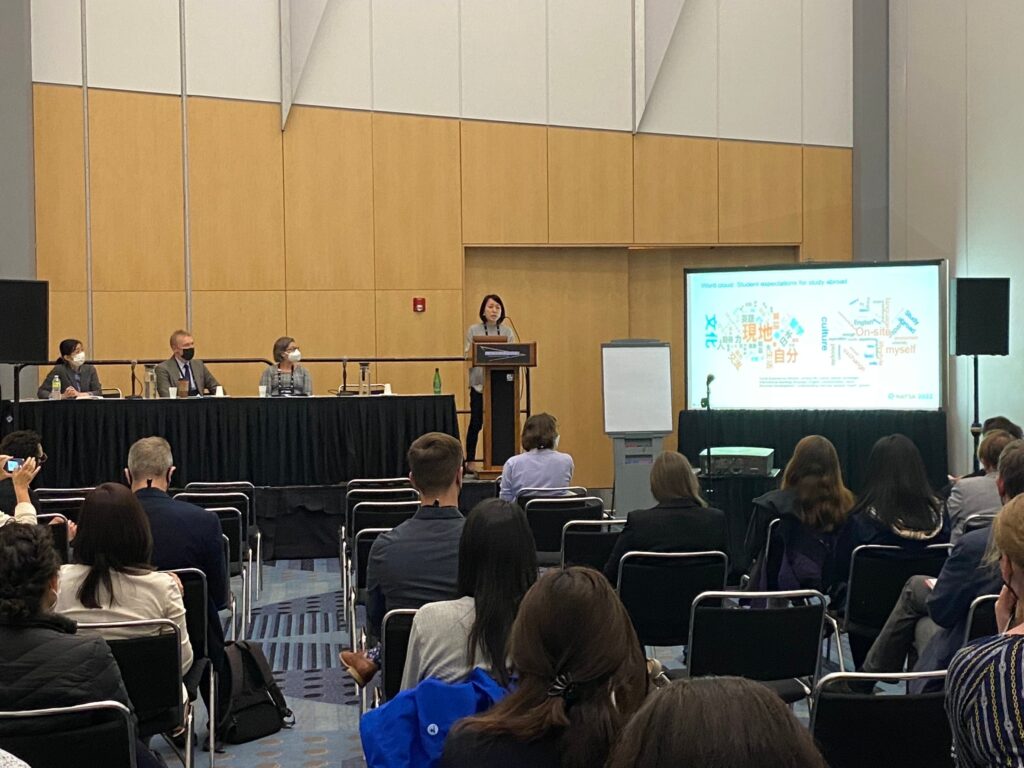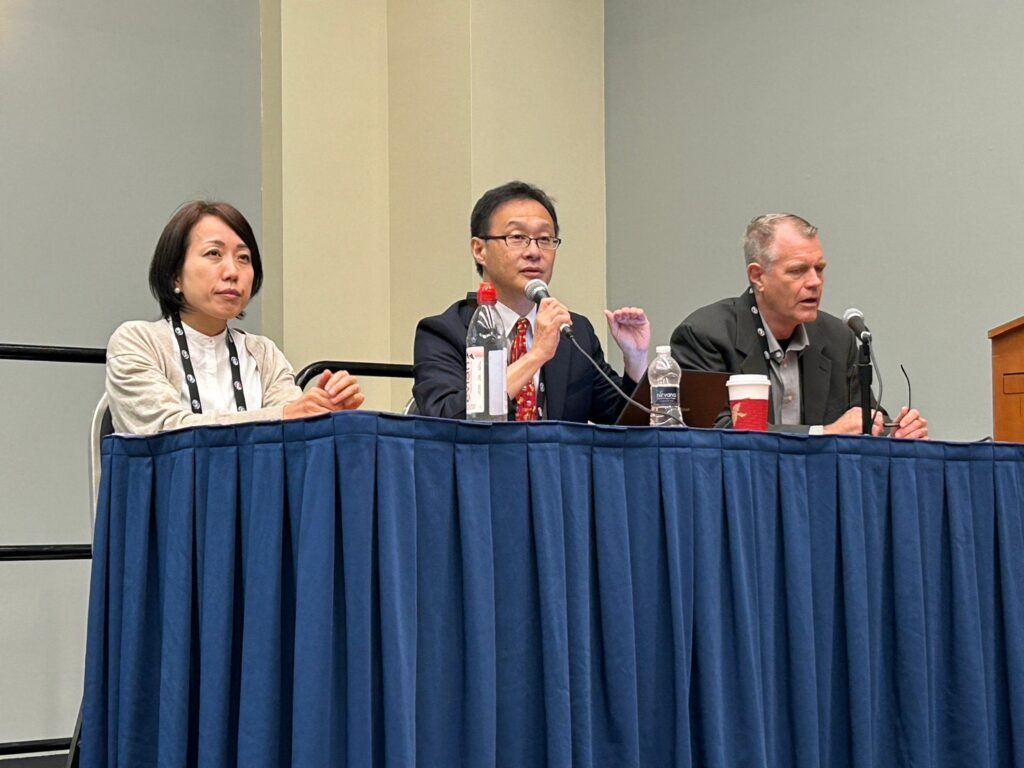
Four of the members, Sachihiko, Yu, Yukiko, and Yuki participated in NAFSA 2022 Conference & Expo held from 31st May to 3rd June in Denver, United States. The event attracted many international educators and professionals from various countries and regions to discuss current issues of international education and expand networks.
Yukiko and Yuki had a panel session with Ms. Leah, M. Mason, EdD. from IIE, and Mr. Benedikt Brisch, the Director of German Academic Exchange Service DAAD New York, on 3rd June, which is the second day of the conference.
The theme of the panel session was “COVID-19 impacts on international education exchange in Germany, Japan, and the United States”. They presented the current trend of international education in Japan, Germany, and the US respectively.
Yukiko and Yuki discussed how Japanese institutions were becoming inward-looking while Japanese students were becoming outward-looking toward study abroad under the COVID-19 situation. The survey targeting institutions showed that the Japanese institutions tended to make decisions relying on government policies and domestic information/networks. In addition, many of the institutions have not been able to envision what kinds of study abroad programs they offered. On the other hand, the Japanese student’s survey results revealed that Japanese students valued on-site study abroad experience and hoped to gain local experience, intercultural learning, and personal development through it.
In reference to Mr. Brisch’s presentation, It was shown that there was a significant decline in the number of international students in Germany in 2020 and a strong recovery in numbers in 2021.It was also stated that the flexibility to the pandemic of European and German International exchange programs such as both virtual and in-person can possibly be adjusted. Coming from the experiences they had during the pandemic, many new digital formats for international exchange were developed and implemented in Germany. The changes are the new digital paths for German Universities such as remote learning, virtual international collaboration, and digital campus.
Ms. Mason from the US introduced the trend of international students in the past 20 years and mentioned the drastically decreased number in 2020. She showed how the institutions dealt with the pandemic during the past years. The most popular method was Hybrid: In-person and virtual. The in-person instruction was limited to only 2% of the total respondents for the survey in 2020. However, the percentage was increased due to the additional 27% of respondents in 2021. She also mentioned that US institutions learned from the pandemic experience and some administrations would be continued virtual, such as student recruitment, orientation, and advising.
The session attracted more than 30 participants from different countries and regions, which enriched the discussion session followed by the presentations. Both presenters and participants were able to be actively engaged and learn from one another at the session.


